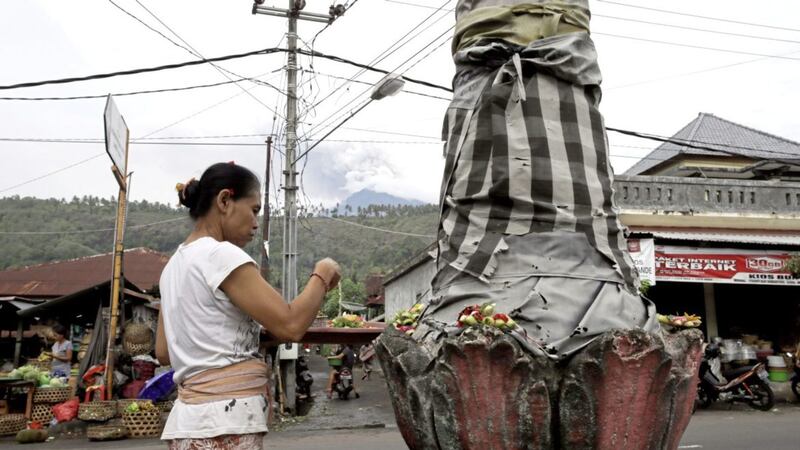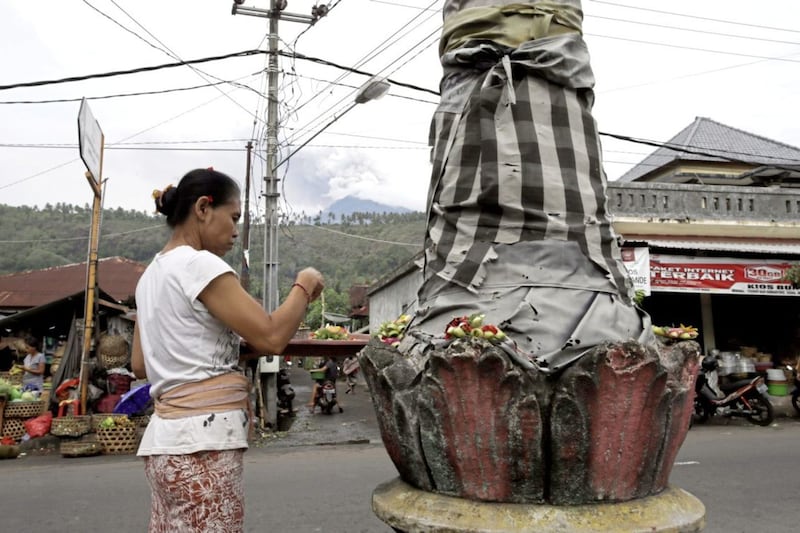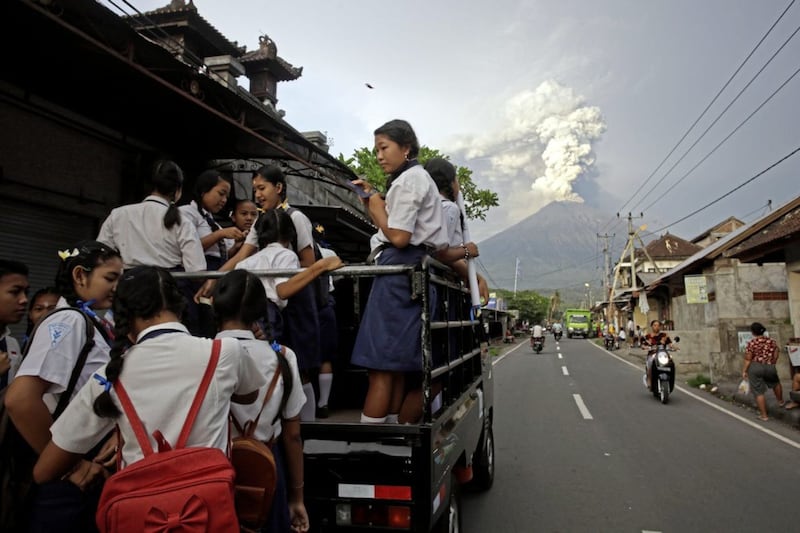The airport on the Indonesian resort island of Bali has reopened after an erupting volcano forced its closure.
Spokesman Arie Ahsannurohim said the ash from Mount Agung has drifted south and south-east, leaving clean space above the airport for planes to land and take off.
Operations had shut down on Monday morning, disrupting travel for tens of thousands of people trying to enter or leave the popular holiday destination. Thick ash particles are hazardous to aircraft and can choke engines.
The danger, however, has not passed. Indonesian President Joko 'Jokowi' Widodo urged anyone still within the exclusion zone near the mountain to get out "for the sake of their safety".
On Monday, authorities told 100,000 people to leave an area extending up to six miles.
Experts said a larger, explosive eruption is possible or Agung could stay at its current level of activity for weeks. Its last major eruption, in 1963, killed about 1,100 people.
"If it got much worse, it would be really hard to think of. You've got a huge population centre, nearly a million people in Denpasar and surroundings, and it's very difficult to envision moving those people further away," said Richard Arculus, a volcano expert at Australian National University, adding that an eruption in 1843 was even more explosive than the one in 1963.
"There are many examples in history where you have this kind of seismic buildup – steam ejections of a little bit of ash, growing eruptions of ash to a full-scale stratosphere-reaching column of ash, which can presage a major volcanic event," he said.
A Nasa satellite detected a thermal anomaly at the crater, said senior Indonesian volcanologist Gede Swantika. That means a pathway from the storage chamber in the volcano's crust has opened, giving magma easier access to the surface.
Indonesian officials first raised the highest alert two months ago when a rash of seismic activity was detected at the mountain. More than 100,000 people living near the volcano fled their homes, many abandoning their livestock or selling them for a fraction of the normal price. The seismic activity decreased by the end of last month, causing authorities to lower the alert level.
Tremors increased again last week and officials upped the alert and ordered another large-scale evacuation, with nearly 40,000 people now staying in 225 shelters, according to the Disaster Mitigation Agency in Karangasem.
But tens of thousands of villagers have remained in their homes because they feel safe or do not want to abandon their farms and livestock.
"Ash has covered my house on the floor, walls, banana trees outside, everywhere," Wayan Lanus, who fled his village in Buana Giri with his wife and daughter, said.
Flows of volcanic mud have been spotted on Agung's slopes, and Mr Arculus warned more are possible as it is the rainy season.
"They're not making a lot of noise. It's just suddenly coming like a flash flood out of nowhere," he said. "You do not want to be near them. Stay out of the valleys."
Indonesia sits on the Pacific 'Ring of Fire' and has more than 120 active volcanoes.





